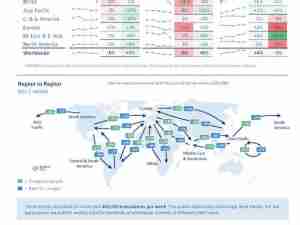By Peter O'Sullivan, Kale Consultants Limited
At the heart of many large cargo carrier operations lie the IT systems whose original implementation can be traced back over 30 years. Written on IBM or Unisys platforms, these systems first provided the basic functionality for core processes such as booking, capacity control, flight schedules and revenue accounts. Larger carriers tended to develop and maintain their own solutions, while others preferred to use a hosted solution from a third party, such as SITA.
At first, there were no credible alternatives to these systems, and so, as the air-cargo industry grew and evolved, they were either enhanced or surrounded by additional systems to meet new business needs. Typically, such needs included airmail, EDI messaging, customs interfaces, Internet connectivity, revenue management, track and trace, and ULD control. However, the new functions were often implemented after compromise over issues such as local versus global operational use, differing interpretations of standards and/or internal IT strategy, and were limited by skill shortages and restricted budgets.
For many within the air-cargo industry, new IT solutions also meant living with issues such as lengthy update schedules, costly maintenance, incompatible software, interface difficulties, and hard-to-retrieve realtime management information.
Evolving IT attitudes
The first innovators were the integrators who invested heavily in their operations and IT platforms and saw their market share rise accordingly. Their closed loop control of the business meant there would be clear benefits from total end-to-end system integration. The integrators pressed forward and invested heavily to ensure their IT solutions reflected their own individual requirements.
The traditional and combination carriers, however, continued to work around the variants of the generic solutions from the 1970s. There were many industry initiatives to improve communication, streamline business processes and use common messaging standards. Though these patched over some of the inherent problems in the IT infrastructures, they produced no immediate results. Worse still, others who sought to introduce new core IT systems during the 1990s suffered well publicized difficulties - so much so that most carriers preferred to maintain their existing systems despite the inconvenience and cost.
Now, however, change is very much back on the agenda. This has been driven by the relentless march of the integrators, increasing service demands of customers, a rapidly changing industry, and (quite often) the need to keep heads above water in a business where costs are growing and yields are continually under pressure.
New system demands
There has been a growing tendency within airlines to make the cargo division a stand-alone business unit - or at least to make the department accountable for the space they are required to fill. This has led to a new attitude towards decision making and, as a result, investment has been made possible.
However, the goal is not just replacement. Yes, airlines are looking for solutions that will actually reduce their costs. But more than that, they are looking for solutions that will enable the business to operate more effectively. This requires solutions that provide new ways of conducting business with airline customers and partners, and requires full integration of business processes throughout the logistics chain. On top of this, airlines are demanding solutions using flexible open architectures and software that is agile enough to allow rapid response to industry change.
Last, but not least, airlines are demanding IT solutions that can provide timely and relevant information back to the airline executive and strategist so that they can fine tune the business and make effective






